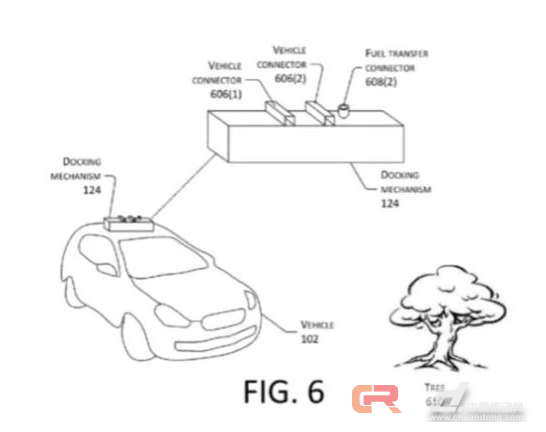Does the Amazon drone charging idea bring evangelization to electric cars?
If your electric car is halfway up a hill and runs out of power, it's stuck in an awkward situation—neither at the village nor able to proceed further. You might find yourself regretting your decision and wishing you had chosen a different mode of transport.
At this critical moment, imagine a drone, like a "telesthetic" assistant, landing on top of your car. It hums with electricity, offering a lifeline when you need it most. This could change your perception of electric vehicles, making you more excited to drive them around without fear of running out of power.

That’s exactly what Amazon is working on. Known for its innovative yet sometimes controversial ideas, the tech giant has recently filed a patent for using drones to charge electric vehicles. The concept is simple but futuristic: if your car’s battery is low, you send a request through the network. A drone equipped with the necessary energy will automatically take off, navigate to your location, and dock with your vehicle. Once connected, it starts charging—no human intervention required. Even if the car is in motion, the charging continues seamlessly.
To achieve this, Amazon’s drones would need advanced capabilities, such as recognizing electric vehicles, using image recognition for authentication, and integrating multiple technologies for secure docking. The drones could be powered by batteries, fuel cells, or other energy sources, which can be either disposable or rechargeable.
While the idea sounds promising, there are still challenges. For now, drones have limited flight time and carrying capacity. However, Amazon has also explored using existing infrastructure like street lights and telephone booths as charging points, which could help extend the range and efficiency of their drone network. Additionally, their nine-story hive patent suggests a future where drones can be stored and refueled in urban areas, supporting the growing demand for electric vehicles.
Currently, the drones’ load capacity is unclear, but based on previous models, they might carry only a few kilograms. That means the amount of energy they can provide is limited—perhaps just enough to get you to the nearest charging station. In that sense, Amazon’s solution may act as a complementary tool rather than a full replacement for traditional charging stations.
However, if battery technology advances significantly, drone-based charging could revolutionize the industry. Charging stations might become smaller and more efficient, while companies like Tesla could benefit from shared infrastructure.
Will flying drones become the next big thing in electric vehicle charging? It’s hard to say, but one thing is certain—this innovation is worth watching closely. As the world moves toward a greener future, solutions like these could play a key role in making electric vehicles more accessible and convenient for everyone.
Aluminum Frame LV 3PH Asynchronous Motor
Aluminum Frame Lv 3Ph Asynchronous Motor,Three-Phase Asynchronous Motor,3 Phase Asynchronous Induction Motor,Aluminum Frame Three Induction Motor
Yizheng Beide Material Co., Ltd. , https://www.beidevendor.com